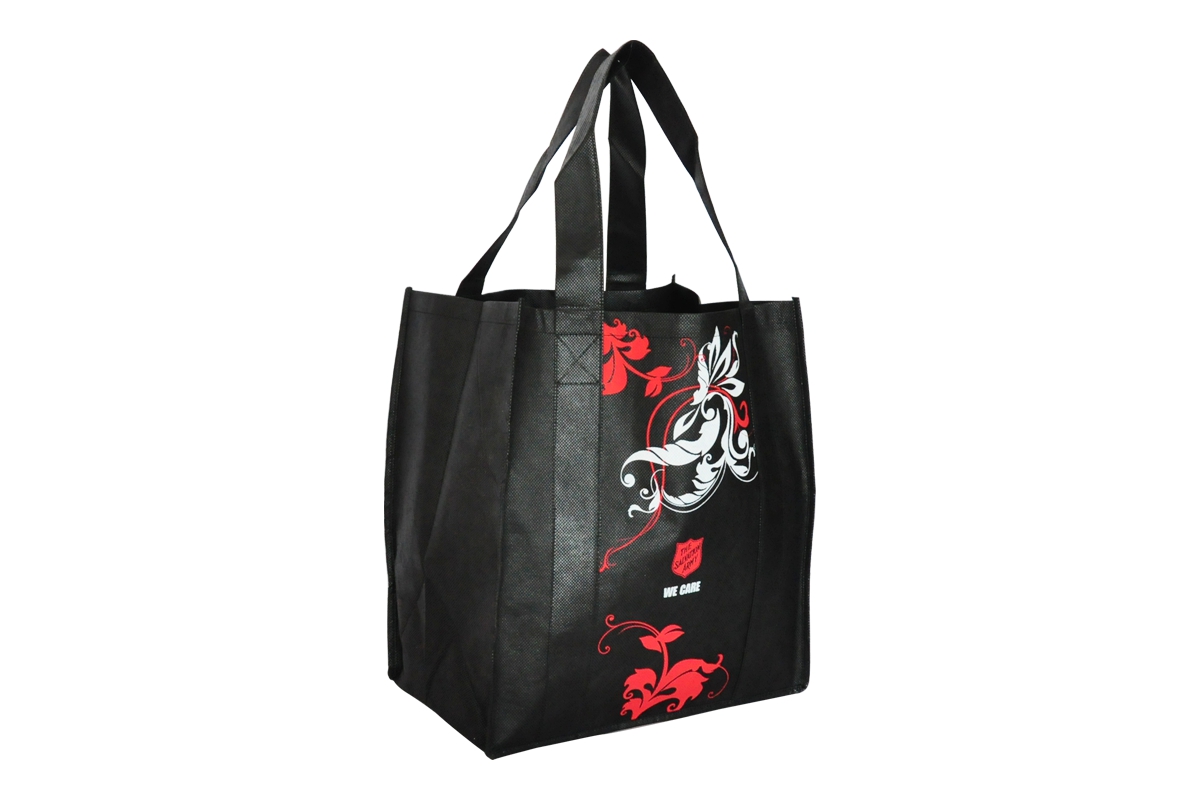Non woven bag
- Material Non woven
- Size 31w x 34h x 20d + Handles 46 x 3.5 cm with PE Brett
- Printing Silk Screen Printing or Heat Transfer Printing
- Printing Size 15 x 20 or customize size
- pieces per carton 100 pieces
- Carton Size 57 x 46 x 32 cm
- Total Weight 9 KGS
- Minimum Order Quantity 500 pieces
Non woven(recycled) bags
Non woven bags are put into use in the market in the late 1990s.
The appearance of Non woven fabric accompanies the rising cost of cotton fabric. At that time, the continuously rising cost of cotton caused barriers on both supply and promotion of cotton bags. In order to balance this phenomenon, some customers in the market began to look for a low cost, an alternative fabric at the same time environmentally friendly. As a result, Non woven bags emerged. Comparing with PE bags, polypropylene spunbond Non woven plays a prominent role in environmental protection, its cost about half of cotton fabric, or even lower.
Polypropylene is a spunbond Non woven fabric which is derived from petroleum by-products. Unlike the natural fabric cotton. Non woven degrades easily in natural conditions and pulderizes for months when it exposes under the sun. So, it must be avoid solarization during storage.
Due to the sunken-pits texture on the surface of Non woven fabric, it is difficult to show the best effect with silk screen print on the fabric. In order to show a fine printing effect, people apply heat transfer printing to Non woven fabric. a thin coating is applied to the surface of the fabric before printing at the first place. In this case, the same printing effect can be achieved as on smooth paper printing.
There is another kind of Non woven fabric we recommend. Its component is polyester, it is also known as PET. There are two kinds of fabric sources, one is taken from recycled plastic bottles, the other is taken from industrial polyester. They look similar to Non woven fabric from the external surface, heat sublimation printing could applied on this kind of bag. The printing effect of gradient color could be shown well on Non woven bag with heat sublimation print, the printing texture looks a little rougher compares to heat transfer print.
recycled
With the strengthening of people's awareness of environmental protection, more and more people begin to pay attention to the recycling of commodies or materials. Because most fabrics or the production procedures of fabrics have more or less impact to the environment. Meanwhile, when a product is reused as an alternative, it does not only save consumers' money, but also has less harmful impact to the environment and is an almost 'absolute' environmental protection practice. When the life span of a certain product reaches to its limit, people tends to pursue the product's remnants recyclability. This practice is considered as the most "environmentally friendly" way to dispose the remnants as well.
Our company has always been committed to environmental protection. Since we entered the industry and at the very beginning of our career, we have been trying to promote and make canvas bags. All the fabric we are using are open-end spinned coarse yarn . The coarse yarns were made of offcust that is made from a spinning mills who apply open-end spinning. Therefore, our canvaws bags are 100% recycled products.
Considering that the consumer groups do not have specific and consistent requirements for our fabrics and the high certification costs, we have not applied for the popular certification in the market for this fabric. In the absence of authentication, the current price of this fabric is preferential and interesting. From a different perspective, this can better help customers save costs.
With the growing demand for recycled products, canvas cannot meet consumers' demand for ever-changing fabrics.We work with our suppliers in order to find a variety of fabrics from the Fabric market in China, explore a variety of alternatives, and try a variety of production processes.
Due to there exists different components and colors of fabric, in the process of sorting must be manual sorting. As far as the market is concerned, it is currently impossible to put it into production using a single process. Although the purpose of recycling waste products has been achieved so far, somehow their production cost is still higher than those of conventional products of the same specifications. We believe that as the market matures and the process continues to improve, customers can use recycled products of high quality and low price in future.
In order to meet the needs of different markets, we are able to process and supply either natural cotton products or recycled products such as polyester or cotton, or can use 100%recycled products or blends with different proportions. Among them, the recycled fabric are divided into two categories, recyclable before consumption and recyclable after consumption. Of course, in order to let consumers rest assured, we can also provide certificates of either fabric, or even transaction proof.
 English (UK)
English (UK)  Deutsch (Deutschland)
Deutsch (Deutschland) 


